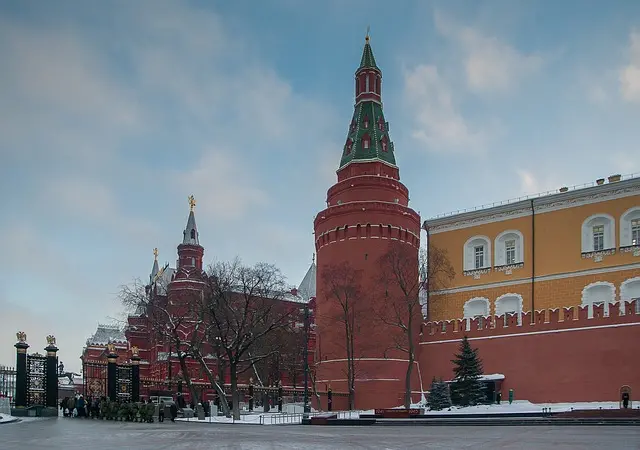
Kremlin Tickets
This is crucial—online reservations are highly recommended. Tickets for the Kremlin are sold at the ticket office outside its western wall (near Alexander Garden) and are divided into three areas:
1. Cathedral Square: 500 rubles.
2. Ivan the Great Bell Tower: 250 rubles.
3. Armoury Chamber: 700 rubles.
Armoury Chamber
The Armoury Chamber is the most popular section of the Kremlin. Originally a repository for weapons, it now serves as a treasury, housing priceless items collected over centuries by tsars and Orthodox patriarchs, as well as gifts from foreign embassies.
• Long Queues: Lines to purchase tickets for the Armoury Chamber are notoriously long. In my case, I waited over three hours.
• Timed Entry: Tickets are sold for specific time slots, and if your turn comes and the current slot is sold out, you’ll have to purchase a later one.
Cathedral Square
Tickets for Cathedral Square are easier to purchase, and the line is typically shorter. Once you have your ticket, you can proceed directly to the Kremlin’s entrance. Arrive early to avoid long queues at the entry gate.
Ivan the Great Bell Tower
Located within Cathedral Square, the Bell Tower requires a separate ticket for entry.
• Timed Visits: The Bell Tower opens hourly, with guided tours led by staff. Visitors can climb the tower for panoramic views.
• Ticket Purchase: Tickets are not sold at the Bell Tower entrance itself but must be purchased at the Kremlin’s main ticket office outside the western wall.
History of the Kremlin
• 1156: The Kremlin was established as a fortress surrounded by earthen walls, symbolizing its role as a citadel (“Kremlin” meaning “fortress inside a city”).
• Over time, Moscow’s crafts, trade, and development flourished around the fortress, with the city becoming the capital of the Grand Duchy of Moscow in the 13th century.
Key Historical Events:
• Four Great Fires: Moscow endured four devastating fires, the last of which occurred during the Romanov Dynasty after the capital moved to St. Petersburg.
• 1812: During Napoleon’s invasion, Moscow was set ablaze, leaving much of the city in ruins. However, most Kremlin structures survived.
Following Napoleon’s defeat and the subsequent invasion of Paris by Allied forces, Russia celebrated its national triumph. The Kremlin and the Alexander Column in St. Petersburg stand as enduring monuments to this victory.
